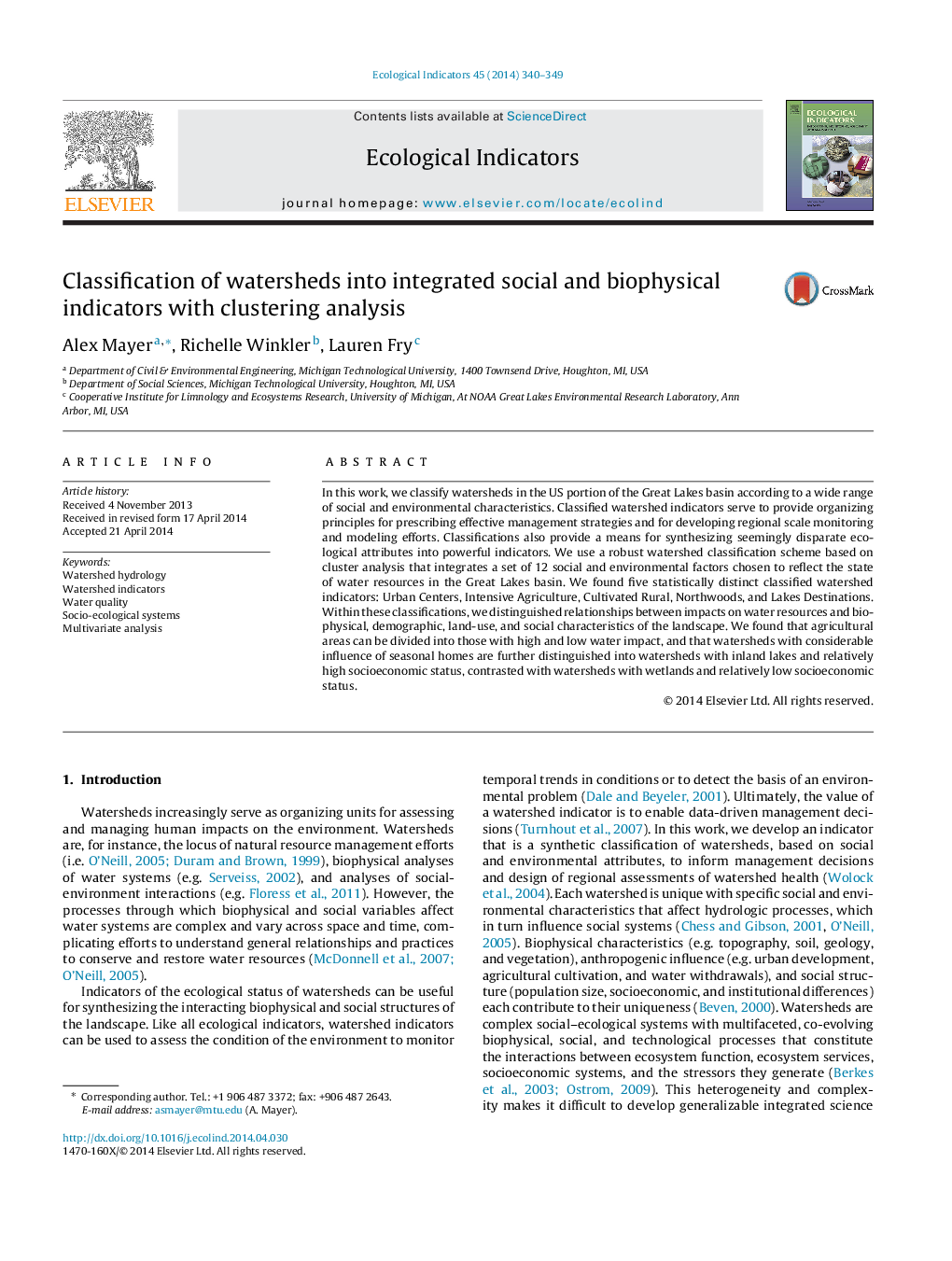| Article ID | Journal | Published Year | Pages | File Type |
|---|---|---|---|---|
| 4373074 | Ecological Indicators | 2014 | 10 Pages |
Abstract
In this work, we classify watersheds in the US portion of the Great Lakes basin according to a wide range of social and environmental characteristics. Classified watershed indicators serve to provide organizing principles for prescribing effective management strategies and for developing regional scale monitoring and modeling efforts. Classifications also provide a means for synthesizing seemingly disparate ecological attributes into powerful indicators. We use a robust watershed classification scheme based on cluster analysis that integrates a set of 12 social and environmental factors chosen to reflect the state of water resources in the Great Lakes basin. We found five statistically distinct classified watershed indicators: Urban Centers, Intensive Agriculture, Cultivated Rural, Northwoods, and Lakes Destinations. Within these classifications, we distinguished relationships between impacts on water resources and biophysical, demographic, land-use, and social characteristics of the landscape. We found that agricultural areas can be divided into those with high and low water impact, and that watersheds with considerable influence of seasonal homes are further distinguished into watersheds with inland lakes and relatively high socioeconomic status, contrasted with watersheds with wetlands and relatively low socioeconomic status.
Related Topics
Life Sciences
Agricultural and Biological Sciences
Ecology, Evolution, Behavior and Systematics
Authors
Alex Mayer, Richelle Winkler, Lauren Fry,
